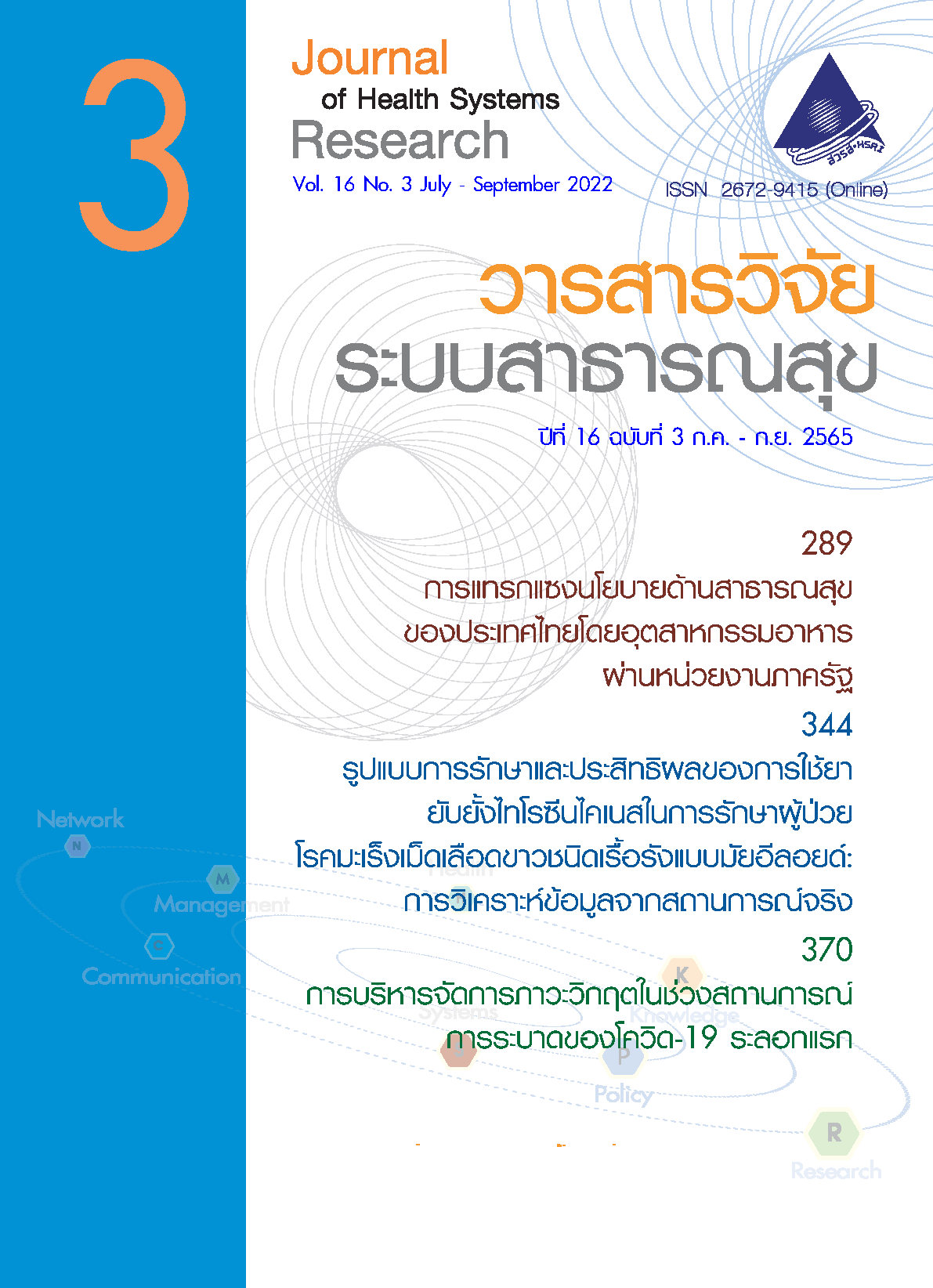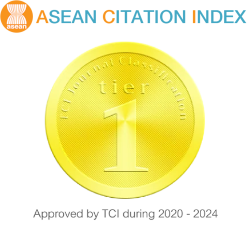Proportion of Dental Specialists Task Performance in Ministry of Public Health Hospitals
Keywords:
dental specialist, dental specialty, task, workforce managementAbstract
There are an increasing number of dental specialists in Thailand especially within the Ministry of Public Health (MOPH), but information about their tasks’ characteristics is not well understood. This cross-sectional descriptive study aimed to explore the task proportion of specialists in MOPH’s hospitals and the determinants of their performance in three dimensions; work factors, health facility environment, and administrative environment. The results show that, aside from specialized dental services, 95.5% of dental specialists still provided basic services, and 68.2 % of them had documentary and administrative activities as part of their routine. On average, dental specialists allocated their working time to basic, specialized service, documentary and administrative works at a proportion of 41%, 48% and 11%, respectively. Work factors that might influence the performance of dental specialists were: 65.9% of respondents reported an intra-organizational agreement, 40.9% pinpointed the overwhelming burden of basic treatments over advance procedures. 18.2% reported low number of patients wanting specialized care, and 15.9% reported a shortage of general practitioners compared to work burden. Regarding health facility environments; 4.6% of dental specialists indicated lack of equipment for their advanced skills, while 31.8% mentioned absence of clear guidelines and systems for consultation or referral within a provincial dental service network. Regarding administrative environments; 38.6% and 43.2% of dental specialists pointed to a lack of policy and monitoring systems that support specialized dental services at provincial and regional levels, respectively. In conclusion, dental specialists in MOPH were responsible for basic and specialized services at similarly high proportions (41% vs. 48%), with additional documentary and administrative works. There are still rooms for development in terms of equipment adequacy, consultation and referral guidelines, policy direction and monitoring system.
References
World Health Organization. Global strategy on human resources for health: workforce 2030. Geneva: World Health Organization; 2016.
World Health Organization. Everybody’s business -- strengthening health systems to improve health outcomes: WHO’s framework for action. Geneva: World Health Organization; 2007.
World Health Organization. The world health report: 2006: working together for health. Geneva: World Health Organization; 2006.
Chen L, Evans T, Anand S, Boufford JI, Brown H, Chowdhury M, et al. Human resources for health: overcoming the crisis. Lancet. 2004;364(9449):1984-90.
Rowe AK, de Savigny D, Lanata CF, Victora CG. How can we achieve and maintain high-quality performance of health workers in low-resource settings? Lancet. 2005;366(9490):1026-35.
Dieleman M, Harnmeijer J. Improving health worker performance: in search of promising practices. Geneva: World Health Organization; 2006.
The Royal College of Dental Surgeons of Thailand. Amount of dentists in Thailand by specialty and region [internet]. 2021 [cited 2021 Dec 09]. Available from: https://www.royalthaident.org/specialist. (in Thai)
Tuongratanaphan S, Utasri T. Factors affecting the decision to residency training program and the retention of dental residents in Thailand. Nonthaburi: Thai Dental Council; 2013. (in Thai)
Ministry of Public Health. Health data center [Internet]. 2021 [cited 10 December 2021]. Available from: https://hdcservice.moph.go.th/hdc/main/index.php. (in Thai)
The Dental Council of Thailand’s Regulation on Requirements for Recognition of Dental Specialists B.E. 2550 (2007). (April 27, 2007). (in Thai)
Morris AJ, Burke FJ. Primary and secondary dental care: how ideal is the interface? British Dental Journal. 2001;191(12):666-70. doi: 10.1038/sj.bdj.4801263.
Dussault G, Franceschini MC. Not enough there, too many here: understanding geographical imbalances in the distribution of the health workforce. Human Resources for Health. 2006;4:12. doi: 10.1186/1478-4491-4-12.
Suanrueang P, Wongsin U. A time-motion study of medical specialists: a case study in eight public hospitals. Journal of Health Systems Research. 2019;13(4):428-41. (in Thai)
Downloads
Published
How to Cite
Issue
Section
License
Copyright (c) 2025 Journal of Health Systems Research

This work is licensed under a Creative Commons Attribution-NonCommercial-NoDerivatives 4.0 International License.
Journal of Health Systems Research is licensed under a Creative Commons Attribution-NonCommercial-NoDerivatives 4.0 International (CC BY-NC-ND 4.0) license, unless otherwise stated.




